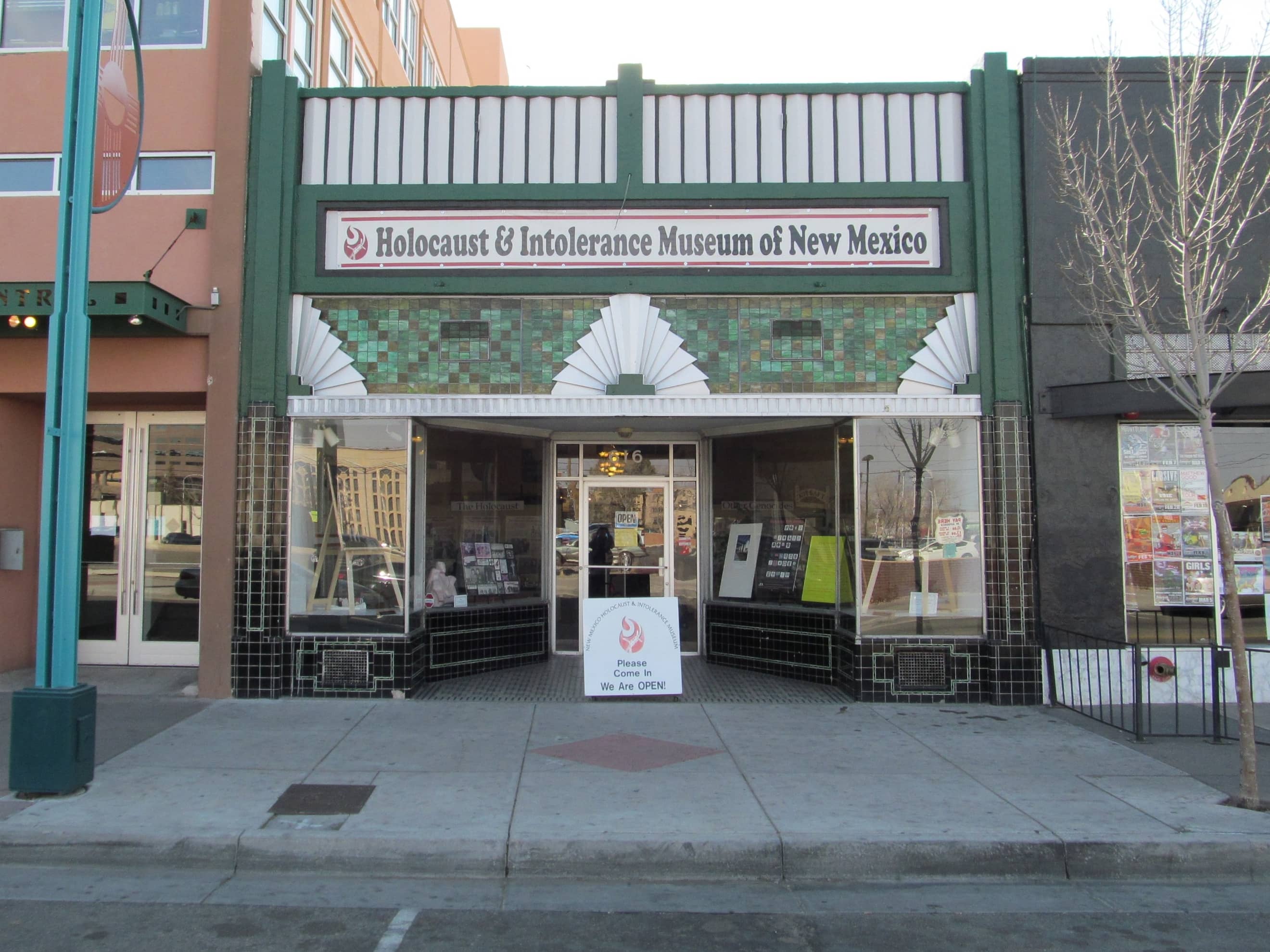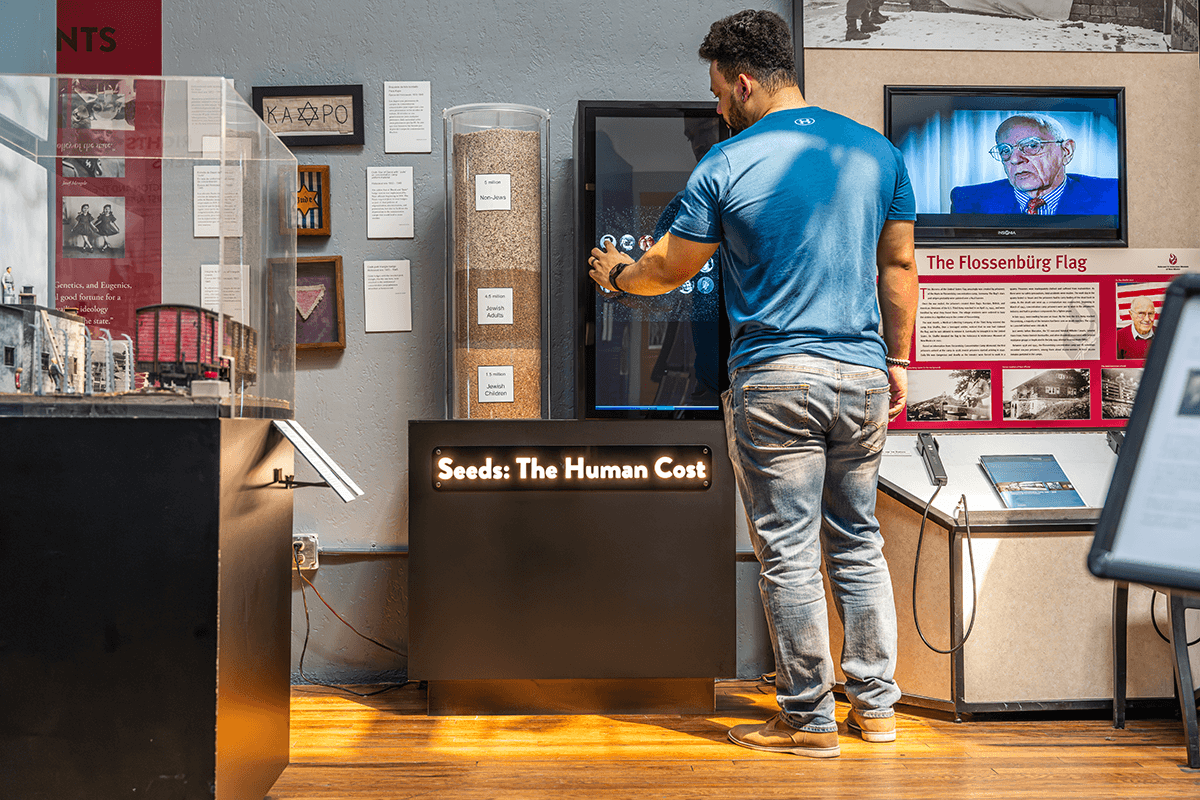
Holocaust and Intolerance Museum of New Mexico
A powerful museum in Albuquerque dedicated to the history of the Holocaust and other genocides, promoting tolerance and understanding.

Highlights
Must-see attractions

Social
From TikTok & Reddit
Best Time
Fewer crowds, more reflective time.

Holocaust and Intolerance Museum of New Mexico
Best Time
Fewer crowds, more reflective time.

Highlights
Must-see attractions
A powerful museum in Albuquerque dedicated to the history of the Holocaust and other genocides, promoting tolerance and understanding.
"A treasure in Albuquerque, rivals counterparts, offering hope for the future."

Free Admission, Donations Welcome
No admission fee, but donations are crucial for museum operations. :heart:
Allow Ample Time
Plan for at least 2-3 hours to fully engage with the impactful exhibits. :clock:

Highlights
Discover the most iconic attractions and experiences

Holocaust Exhibits
Detailed accounts and artifacts from the WWII Holocaust, offering a profound historical perspective.

Genocides Beyond the Holocaust
Explores other significant genocides, including Armenian, Greek, and Native American, fostering broader understanding.

Seeds Exhibit
Permanent Exhibit
An interactive exhibit designed to educate on intolerance and promote unity, featuring a new pedestal.

Witnessing Nuremberg
Interactive Exhibit
An interactive experience focusing on the Nuremberg trials, offering insights into justice and accountability.
Plans like a pro.
Thinks like you
Planning Your Visit
Plan Your Visit
Emotional Preparedness
Best Times
Insider Tips
from TikTok, Instagram & Reddit
Free Admission, Donations Welcome
No admission fee, but donations are crucial for museum operations. :heart:
Allow Ample Time
Plan for at least 2-3 hours to fully engage with the impactful exhibits. :clock:
Prepare for Emotional Content
Exhibits are powerful and can be emotionally challenging. :sob:
Learn About Other Genocides
Discover lesser-known genocides and the roots of intolerance. :world_map:
Tips
from all over the internet
Free Admission, Donations Welcome
No admission fee, but donations are crucial for museum operations. :heart:
Allow Ample Time
Plan for at least 2-3 hours to fully engage with the impactful exhibits. :clock:
Prepare for Emotional Content
Exhibits are powerful and can be emotionally challenging. :sob:
Learn About Other Genocides
Discover lesser-known genocides and the roots of intolerance. :world_map:
Upstander vs. Bystander
Learn how to be an 'upstander' and combat hate. :raisedhandwithfingerssplayed:
What Travellers Say
Reviews Summary
Visitors consistently praise the Holocaust and Intolerance Museum of New Mexico as a vital and informative institution. Many highlight its comprehensive approach, covering not only the Holocaust but also other significant genocides and the broader themes of intolerance. The museum is lauded for its engaging exhibits and the dedication of its staff, leaving visitors with a profound sense of both historical understanding and hope for a more tolerant future.
"This is a treasure in Albuquerque and should be visited by everyone. The panels were informative, engaging, and relevant to our times. I encourage everyone who passes by to stop in and visit and support an important museum."
Anthony Castro
"Rivals the counterpart we know back home in L.A., if only for the fact that, while half is dedicated to the holocaust during WW2, the other half strives to educate on those injustices not in the popular dialogue, like the Armenian and Rwandan genocides. Also takes a solid stab at explaining how these sorts of mentalities get off the ground. Kindhearted people working here and there's pamphlets that can serve as a Injustice For Dummies guide on many of these issues. You leave here with a lot of depressing knowledge but a lot of hope for the future too! A must."
Smevin Bravis
"We visited here while vacationing in ABQ, and we're glad we didn't miss out. I actually learned a few facts that I was not aware of previously regarding the persecution of minorities along with the Jews. Very interesting place to visit."
Damian&Rita Explorers
What People Like
What People Dislike
Frequently Asked Questions
🚇 🗺️ Getting There
The museum is located in downtown Albuquerque. Parking can be found in nearby garages and street parking is available. Public transportation options may also serve the downtown area.
Yes, there are parking garages and street parking options in the vicinity of the museum in downtown Albuquerque.
Operating hours can vary, so it's best to check the museum's official website or social media for the most up-to-date information before your visit.
The museum is generally open on weekends, but it's always recommended to confirm their hours of operation in advance.
The museum strives to be accessible. It's advisable to contact them directly for specific accessibility information regarding exhibits and facilities.
🎫 🎫 Tickets & Entry
There is no admission charge to visit the museum. However, they gratefully accept donations to support their educational mission.
Since there is no admission fee, advance ticket booking is not typically required. However, for special events, it's best to check their announcements.
Yes, donations are highly encouraged and are essential for the museum's continued operation and educational programs.
The museum welcomes volunteers, and opportunities may arise for transcribing messages or assisting with events.
The museum occasionally hosts special events, such as dedications for new exhibits like the Czech Torah case. Keep an eye on their social media for announcements.
🎫 🧭 Onsite Experience
You'll find exhibits on the Holocaust, as well as other genocides like the Armenian, Greek, and Native American genocides. They also cover topics like propaganda and being an 'upstander'.
The museum covers sensitive and mature themes. While educational, parents should consider the emotional impact on younger visitors.
Yes, the museum features interactive elements, such as the 'Witnessing Nuremberg' exhibit and the 'Seeds' exhibit.
The pink triangle was used to mark homosexuals in Nazi concentration camps. It has also been adopted as a symbol of LGBTQ+ rights and activism.
Visitors generally recommend allocating at least 2-3 hours to fully experience and absorb the information presented in the exhibits.
📸 📸 Photography
Photography policies can vary. It's best to check for signage within the museum or ask a staff member if photos are permitted, especially without flash.
While general photography rules apply, some visitors share photos of exhibits that resonate with them, often focusing on messages of hope or learning.
Exhibits that focus on messages of tolerance, hope, or historical significance might be visually compelling, but always respect museum guidelines.
Sharing your experience on social media can help raise awareness. Tagging the museum is a great way to support their mission.
Drone photography is generally not permitted inside museums or in enclosed public spaces.
For Different Travelers
Tailored advice for your travel style
👨👩👧 Families with Kids
Consider visiting during less crowded times, like weekday mornings, to allow for a more paced and reflective experience. It's a place to foster important conversations about history, empathy, and the importance of standing up against injustice.
📚 History Enthusiasts
Pay close attention to the exhibits that explore the mechanisms of propaganda and the societal factors that contribute to intolerance. The museum's commitment to educating about 'upstanders' also provides inspiring historical examples of resistance and courage.
💡 Social Justice Advocates
Explore the exhibits that connect historical events to contemporary issues of prejudice and discrimination. The museum serves as a powerful reminder of the ongoing need for vigilance and action to promote equality and human rights.
Deep Dives
In-depth insights and expert knowledge
Understanding Intolerance: Beyond the Holocaust
These exhibits highlight the systematic nature of genocide and the importance of remembering these events to prevent future atrocities. The museum emphasizes that intolerance can manifest in various forms and affect different communities, underscoring the need for global awareness and action.
Visitors often express appreciation for this broader scope, noting that it offers a more complete picture of human rights violations and the enduring struggle for justice. It encourages a deeper reflection on the interconnectedness of historical events and the universal fight against discrimination.
The Power of Being an Upstander
Through various displays and narratives, visitors learn about the courage it takes to speak out against prejudice, discrimination, and violence. The museum aims to empower individuals with the knowledge and inspiration to make a positive difference in their communities and the world.
This focus on empowerment leaves many visitors with a sense of hope, despite the heavy subject matter. They leave understanding that individual actions, no matter how small, can contribute to a more just and tolerant society.
Interactive Learning and Modern Exhibits
Another notable interactive element is the 'Seeds' exhibit, which has been enhanced with a new pedestal designed by Ideum. This exhibit focuses on promoting unity and educating about the roots of intolerance. Such modern approaches ensure that the museum remains relevant and impactful for contemporary audiences.
These interactive components, combined with informative panels and artifacts, create a dynamic learning environment. They cater to different learning styles and help visitors connect with the material on a more personal level, making the educational experience more profound and memorable.






Social
from TikTok, Instagram & Reddit